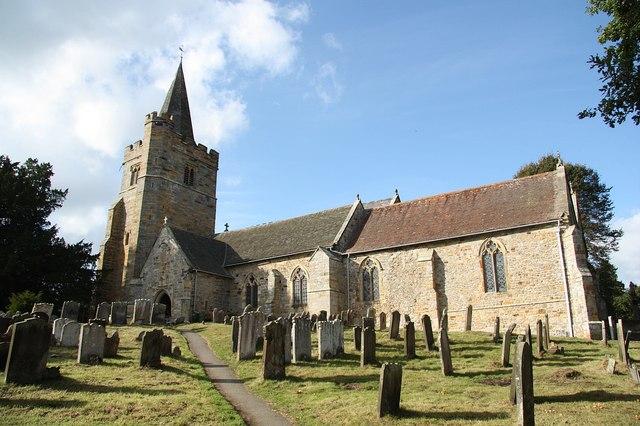St Michael Cornhill
City of London, Greater London
The church lies over the remains of the Basilica, the northern most part of the great Roman Forum built in the first century AD.

There is evidence of a church on this site in Saxon times, consecrated on the 29th September 998, of which nothing now remains.
Lamberhurst, Kent
The church is a ‘much loved friend’ that shows signs of continual additions and adaptations. The present building mainly in the Decorated style of the 14th century and the Perpendicular style of the 15th century and has undergone many alterations and adaptations.
In 1840 major restoration work was carried out but in a rather unskilled way. Many images, crosses, piscinas and other pieces were discovered in the rubble and were fixed in places that were thought to be suitable.
In the nave are memorials to various of the Morland family, a family which has owned Court Lodge, the large house to the west of the church for nearly 300 years. Above the south arcade are three hatchments, painted in the 19th century, and showing the arms of Morland, Matson and Marriott families.
Above the organ you can see the fine Perpendicular west window. It was inserted in the 15th century but by 1870 it was in urgent need of renewal and was restored as an exact copy of the original.
Dominating the chancel arch is the pulpit. Behind the preacher's head, is the date 1630 and the Vicar's initials R(obert) S(teede). The lower desk was contrived in the 19th century reusing older materials, including the poppyheads.
All the stained glass in the Chancel dates from 1870. The stonework of the east window in the Perpendicular style and probably dates from the 15th century, the same date as the tower. The window is known at the Te Deum window. Windows in north wall are in memory of Margaret Morland and represent four major episodes in the life of Christ. The lancet window in the sanctuary depicts the victory of the Lamb and the coming of the Spirit.
The reredos is by Tinworth, a potter at Doultons who modelled in terracotta. His biggest work is in Truro Cathedral, the triptych represents the trial and crucifixion of Christ, and rest on a ledge behind the altar. The altar steps were reconstructed with 14th century tiles found at Scotney Castle, whilst the altar is similar to the main altar and made from Georgian gallery panelling. The four wrought iron candlesticks at the main altar were made at the forge in the Village by local craftsman. Cast iron tombstones are set in the floor. The Thomas family lived at The Great House, now called Coggers Hall, in the village from about 1600 to 1750.
City of London, Greater London
The church lies over the remains of the Basilica, the northern most part of the great Roman Forum built in the first century AD.
City of London, Greater London
The Dutch Church is a reformed church on the site of the 13th century Augustinian friary, the original building granted to Protestant refugees for their church services in 1550 was destroyed during the London Blitz.
Marshfield, Gwent
Mae Eglwys St Mair, Maerun, yn eglwys brydferth sy’n dyddio nôl i’r ddeuddegfed ganrif. Yn nythu’n glud yn y llain las rhwng Caerdydd a Chasnewydd, mae bellach yn adnabyddus am fod yn lleoliad ar gyfer un o episodau Dr Who!